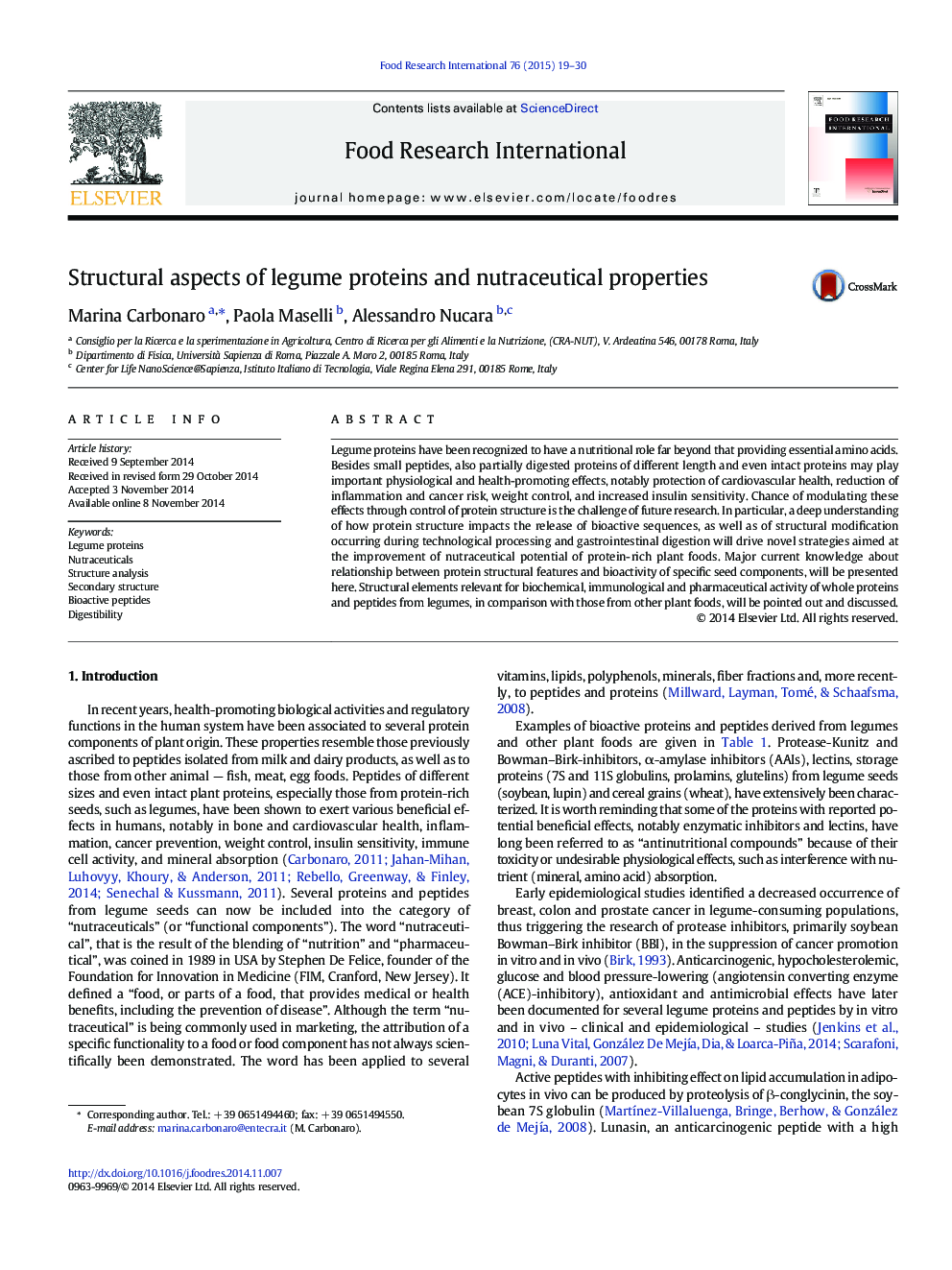| Article ID | Journal | Published Year | Pages | File Type |
|---|---|---|---|---|
| 4561509 | Food Research International | 2015 | 12 Pages |
•Structure of legume proteins affects production of bioactive sequences.•Legume proteins have dominant β-sheet structure and high hydrophobicity.•Processing decreases bioactive release by increasing protein–protein interaction.•Structure affects interaction with nonprotein compounds, and their bioavailability.
Legume proteins have been recognized to have a nutritional role far beyond that providing essential amino acids. Besides small peptides, also partially digested proteins of different length and even intact proteins may play important physiological and health-promoting effects, notably protection of cardiovascular health, reduction of inflammation and cancer risk, weight control, and increased insulin sensitivity. Chance of modulating these effects through control of protein structure is the challenge of future research. In particular, a deep understanding of how protein structure impacts the release of bioactive sequences, as well as of structural modification occurring during technological processing and gastrointestinal digestion will drive novel strategies aimed at the improvement of nutraceutical potential of protein-rich plant foods. Major current knowledge about relationship between protein structural features and bioactivity of specific seed components, will be presented here. Structural elements relevant for biochemical, immunological and pharmaceutical activity of whole proteins and peptides from legumes, in comparison with those from other plant foods, will be pointed out and discussed.
